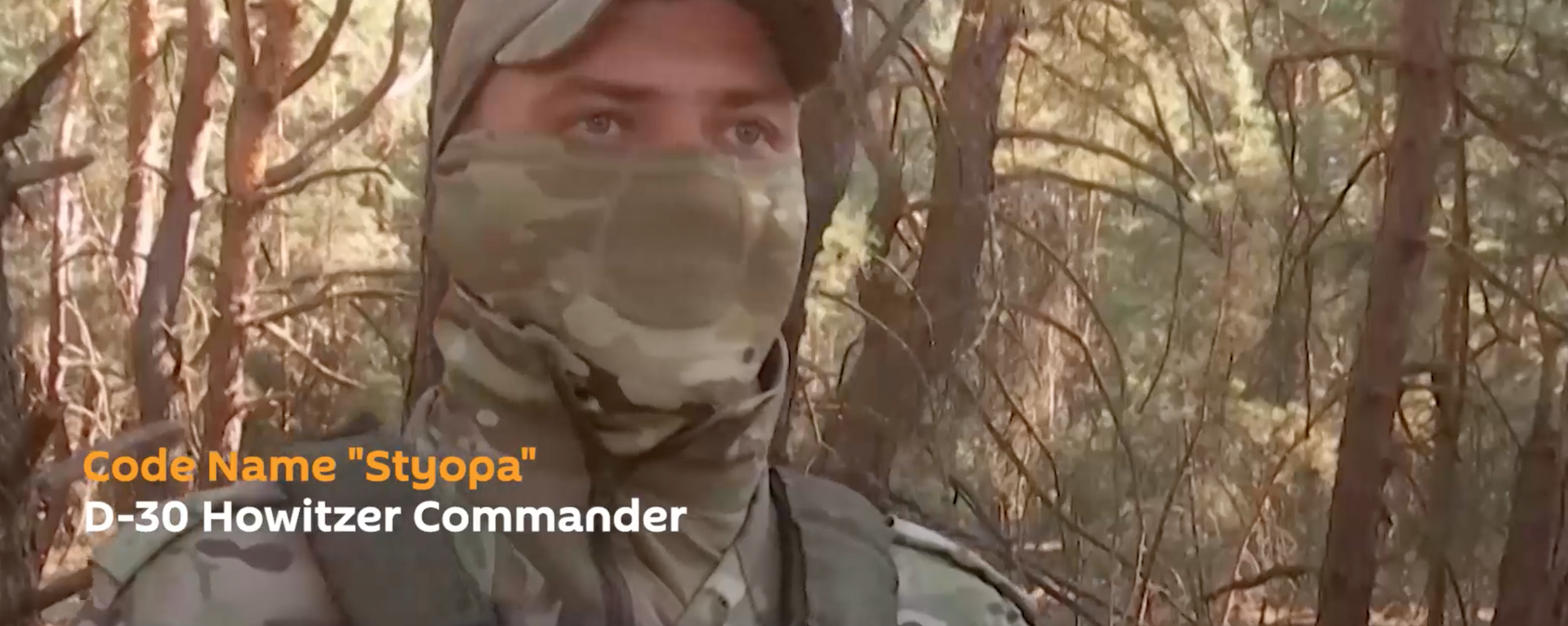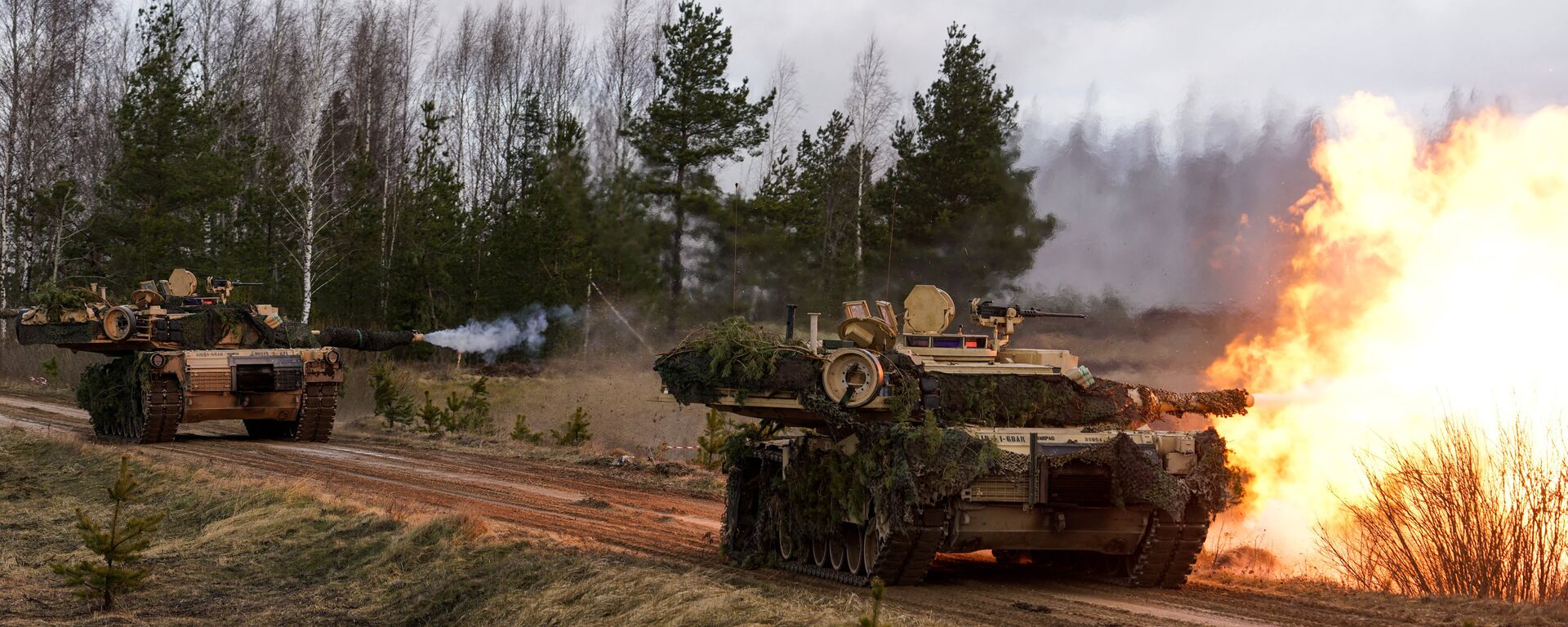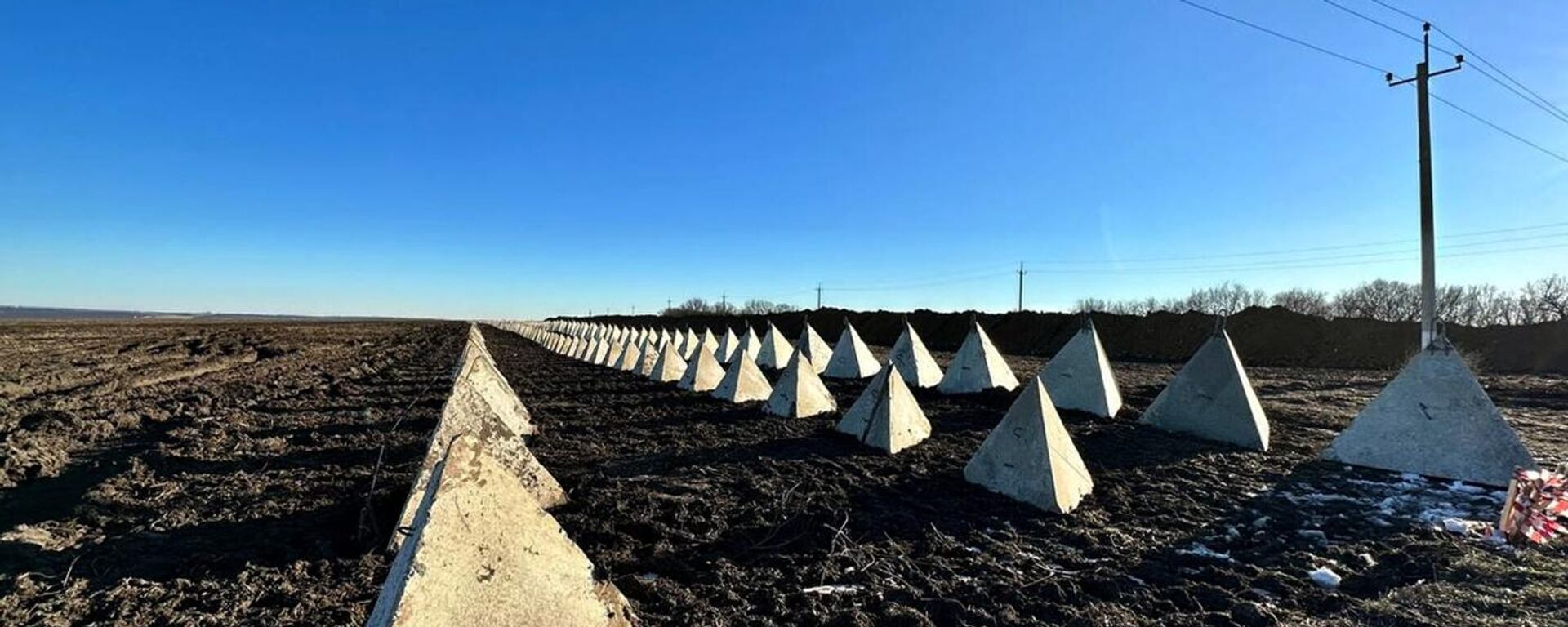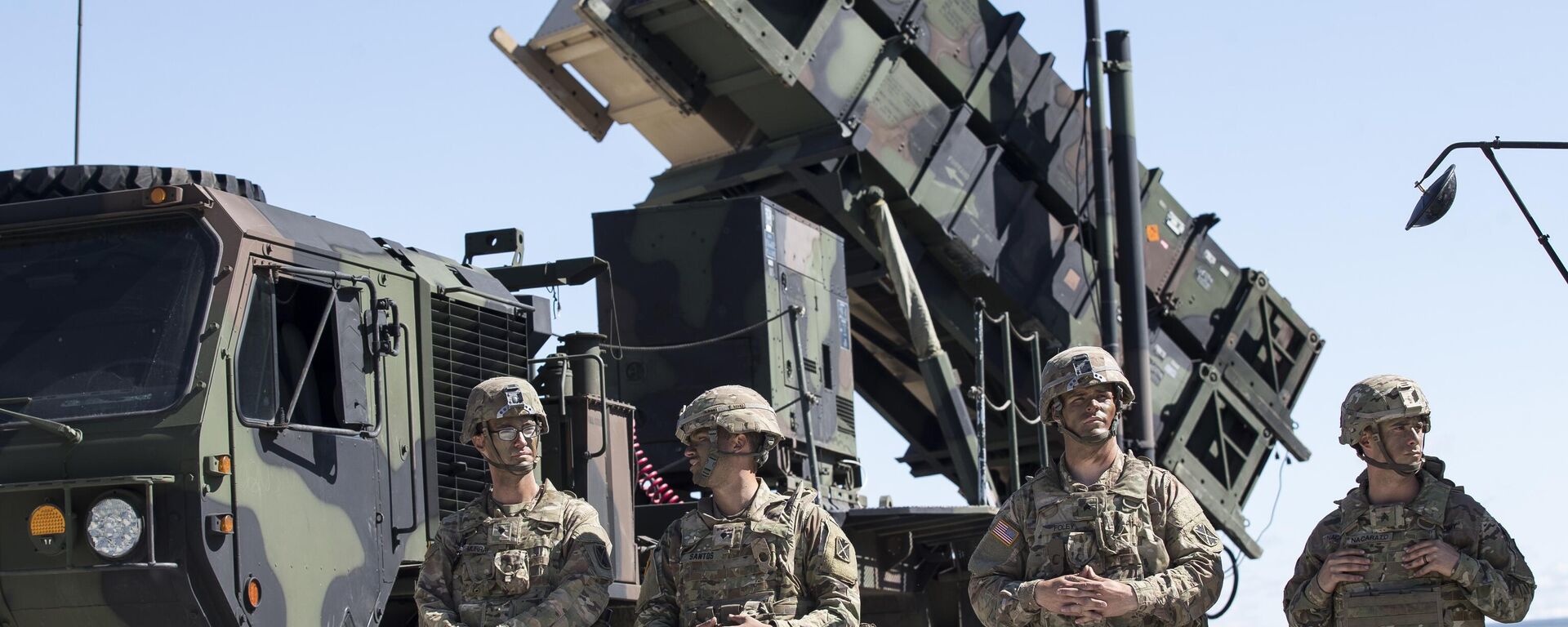https://sputnikglobe.com/20231031/ukraine-sees-spike-in-leopard-losses-returns-to-soviet-era-tanks-1114621928.html
Ukraine Sees Spike in Leopard Losses, Returns to Soviet-Era Tanks
Ukraine Sees Spike in Leopard Losses, Returns to Soviet-Era Tanks
Sputnik International
Ukraine has lost approximately one-fifth of its NATO-supplied Leopard tanks in the conflict zone, thus compelling the Kiev regime to transition to refurbished T-72s from the Soviet era.
2023-10-31T14:11+0000
2023-10-31T14:11+0000
2024-01-30T10:27+0000
kiev
russia
ukraine
nato
ukrainian armed forces
leopard 2
israel
russia's special operation in ukraine
ukrainian counteroffensive attempt
us
https://cdn1.img.sputnikglobe.com/img/07e7/09/13/1113505023_0:160:3072:1888_1920x0_80_0_0_646b73ebe25362816299a4eb99b5d09a.jpg
The Russian forces have been routinely knocking out Ukraine's NATO-grade armored vehicles including the much-lauded Leopard 2 main battle tanks (MBT).Last week, the Ukrainian Armed Forces lost six Leopards in Zaporozhye. Four of them were reduced to rubble during a battle within the vicinity of Rabotino and Verbovoye, another two were struck by Russia's FPV drones near Novoprokopovka.On October 29, a drone operator commander who goes by the code name "Yakut" told Sputnik that units of the 1430th Regiment of the Russian Armed Forces destroyed an armored group of two Leopard tanks and two Bradley infantry fighting vehicles (IFVs) in the region."There was an offensive from Rabotino, [the Ukrainian military] tried to enter Novoprokopovka. We worked on targets, destroyed two Leopards, two Bradleys using FPV drones," said Yakut.Since launching its counteroffensive attempt, Ukraine has lost around 12 out of its 71 Leopard 2 tanks, or a fifth of the Germany-made MBTs supplied by NATO, the Western press admits, adding that many more Leopards have suffered damage and were sent to repair depots in Poland and Germany.Western Experts Predicted Leopards' DemiseSpeaking to Sputnik back in January, international military experts predicted that NATO-grade battle-tanks could quickly "bite the dust" in the conflict zone.They pointed out that during the US-led war in Afghanistan, Leopards sustained their first losses when they faced Islamist militants armed with Cold War-era anti-tank systems. As a result, three Canadian and six Danish Leopard 2 tanks were obliterated, and another 15 Canadian Leopards were disabled but later repaired.Similarly, dozens of Turkiye's Leopard tanks deployed to northern Syria in 2016 and 2018 to fight against Daesh (ISIS)* and Kurdish militias were eliminated by improvised explosive devices (IEDs), suicide car bombs, or anti-tank guided missiles.In contrast to Afghan and Middle Eastern fighters, the Russian Army is equipped with state-of-the-art weapons systems, experts explained. They also highlighted the challenges that Leopard crews would face when fighting in urban and field conditions against Russia's conventional forces, as well as the difficulties posed by the spring thaw and winter freeze. Additionally, the experts stated that even hundreds of NATO-grade tanks would not have a significant impact on the battlefield.Their predictions turned out to be "prophetic", given that according to the Western press, Leopards have had to struggle with Russia's minefields and "Dragon teeth" defenses, while sustaining serious damage from FPV drones and Russia's artillery.US media identified Russia's unmanned aerial vehicles (UAVs) as being responsible for the many recent failures of Leopard 2 tanks. A swarm of relatively small FPV drones, each carrying one grenade, has proven to be a formidable anti-tank weapon. While the initial attack usually immobilizes the armored vehicles, subsequent attacks lead to their destruction.Likewise, Russia's "Dragon teeth" defense has proven a highly efficient trap against NATO-grade tanks. Initially, the Western and Ukrainian media mocked the pyramid-shaped concrete obstacles, claiming that they would fail to stop the Ukrainian offensive march.West Sending Ukraine Old T-72sAccording to Western media, Ukraine may eventually have a total inventory of 350 NATO-grade tanks, including replacements and new deliveries. However, given the intensity of the conflict, even this number seems to be a drop in the bucket. By comparison, Russia has disabled a whopping 13,019 tanks and armored fighting vehicles belonging to Ukraine since February 2022.While the Western media acknowledges that the T-72EA is not the best tank in Ukraine's arsenal, it is also not the worst. There have been repeated reports of the US and its allies sending outdated equipment to Kiev, some of which even contained hazardous substances. Furthermore, due to a lack of ammunition and concerns about sending their advanced weapons, the West has resorted to creating "Frankenstein" systems for Ukraine by combining legacy American and Soviet-era weaponry. The Pentagon is reportedly planning to send its FrankenSAM air defenses to Ukraine in the near future.Fatigue with Ukraine, coupled with the Kiev regime's failed counteroffensive and the West's focus on the Palestine-Israel crisis, pose significant challenges for the Ukrainian Armed Forces and their ability to engage in combat.* Daesh (ISIS) is a terrorist organization banned in Russia and many other states.
https://sputnikglobe.com/20230929/russian-soldiers-receive-one-million-ruble-check-for-destroying-ukraines-leopard-tank-1113790428.html
https://sputnikglobe.com/20230127/four-reasons-leopard-2s--m1-abrams-will-bite-the-dust-in-ukraine-1106772754.html
https://sputnikglobe.com/20230906/what-is-russias-dragon-teeth-defense-1113154028.html
https://sputnikglobe.com/20231030/frankensam-why-us-chimera-arms-wont-fill-critical-gaps-in-ukraines-air-defenses-1114602854.html
kiev
russia
ukraine
israel
palestine
Sputnik International
feedback@sputniknews.com
+74956456601
MIA „Rossiya Segodnya“
2023
News
en_EN
Sputnik International
feedback@sputniknews.com
+74956456601
MIA „Rossiya Segodnya“
Sputnik International
feedback@sputniknews.com
+74956456601
MIA „Rossiya Segodnya“
ukrainian army, ukrainian conflict, war in ukraine, german-made leopard tanks, leopard 2, nato weapons, us military aid to ukraine, western tanks in ukrainian army, t-72 tanks for ukraine, us legacy weapons ukraine, nato tanks destroyed by drones and artillery
ukrainian army, ukrainian conflict, war in ukraine, german-made leopard tanks, leopard 2, nato weapons, us military aid to ukraine, western tanks in ukrainian army, t-72 tanks for ukraine, us legacy weapons ukraine, nato tanks destroyed by drones and artillery
Ukraine Sees Spike in Leopard Losses, Returns to Soviet-Era Tanks
14:11 GMT 31.10.2023 (Updated: 10:27 GMT 30.01.2024) Ukraine has lost approximately one-fifth of its NATO-supplied Leopard tanks in the conflict zone, thus compelling the Kiev regime to transition to refurbished T-72s from the Soviet era.
The Russian forces have been routinely knocking out Ukraine's NATO-grade armored vehicles including the much-lauded Leopard 2 main battle tanks (MBT).
Last week, the Ukrainian Armed Forces lost six Leopards in Zaporozhye. Four of them were reduced to rubble during a battle within the vicinity of Rabotino and Verbovoye, another two were struck by Russia's FPV drones near Novoprokopovka.
"In the Orekhov direction, in the area between Rabotino and Verbovoye, the enemy attacked our positions with more than ten units of heavy armored vehicles, of which at least six were German tanks. The enemy encountered heavy fire, and according to confirmed data from the front line, four Leopard tanks were destroyed by our drones and heavy multiple rocket launcher systems," Vladimir Rogov, head of the Zaporozhye public movement "We are together with Russia," told Sputnik on October 27.
On October 29, a drone operator commander who goes by the code name "Yakut" told Sputnik that units of the 1430th Regiment of the Russian Armed Forces destroyed an armored group of two Leopard tanks and two Bradley infantry fighting vehicles (IFVs) in the region.
"There was an offensive from Rabotino, [the Ukrainian military] tried to enter Novoprokopovka. We worked on targets, destroyed two Leopards, two Bradleys using FPV drones," said Yakut.
Since launching its counteroffensive attempt, Ukraine has lost around 12 out of its 71 Leopard 2 tanks, or a fifth of the Germany-made MBTs supplied by NATO, the Western press admits, adding that many more Leopards have suffered damage and were sent to repair depots in Poland and Germany.

29 September 2023, 10:47 GMT
Western Experts Predicted Leopards' Demise
Speaking to
Sputnik back in January,
international military experts predicted that NATO-grade battle-tanks could quickly
"bite the dust" in the conflict zone.
They pointed out that during the US-led war in Afghanistan, Leopards sustained their first losses when they faced Islamist militants armed with Cold War-era anti-tank systems. As a result, three Canadian and six Danish Leopard 2 tanks were obliterated, and another 15 Canadian Leopards were disabled but later repaired.
Similarly, dozens of Turkiye's Leopard tanks deployed to northern Syria in 2016 and 2018 to fight against Daesh (ISIS)* and Kurdish militias were eliminated by improvised explosive devices (IEDs), suicide car bombs, or anti-tank guided missiles.
In contrast to Afghan and Middle Eastern fighters, the Russian Army is equipped with state-of-the-art weapons systems, experts explained. They also highlighted the challenges that Leopard crews would face when fighting in urban and field conditions against Russia's conventional forces, as well as the difficulties posed by the spring thaw and winter freeze. Additionally, the experts stated that even hundreds of NATO-grade tanks would not have a significant impact on the battlefield.

27 January 2023, 18:00 GMT
Their predictions turned out to be "prophetic", given that according to the Western press, Leopards have had to struggle with Russia's minefields and "Dragon teeth" defenses, while sustaining serious damage from FPV drones and Russia's artillery.
US media identified Russia's unmanned aerial vehicles (UAVs) as being responsible for the many recent failures of Leopard 2 tanks. A swarm of relatively small FPV drones, each carrying one grenade, has proven to be a formidable anti-tank weapon. While the initial attack usually immobilizes the armored vehicles, subsequent attacks lead to their destruction.
Likewise, Russia's
"Dragon teeth" defense has proven a highly efficient trap against NATO-grade tanks. Initially, the Western and Ukrainian media mocked the pyramid-shaped concrete obstacles, claiming that they would fail to stop the Ukrainian offensive march.
The effectiveness of Russia's "Dragon teeth" defense has also been documented. Initially mocked by the Western and Ukrainian press, these pyramid-shaped concrete obstacles create the illusion that they are easy to overcome. However, once the Ukrainian tanks break through the first line of defenses, they become stuck and vulnerable to Russian artillery and other anti-tank weapons.

6 September 2023, 15:59 GMT
West Sending Ukraine Old T-72s
According to Western media, Ukraine may eventually have a total inventory of 350 NATO-grade tanks, including replacements and new deliveries. However, given the intensity of the conflict, even this number seems to be a drop in the bucket. By comparison, Russia has disabled a whopping 13,019 tanks and armored fighting vehicles belonging to Ukraine since February 2022.
Apparently, therefore, Ukraine's Western allies have settled on the "easiest way" to provide the Kiev regime with tanks, that is, to pay a Czech firm CSG Defense to "upgrade" old Soviet-era T-72s produced in the 1980s. The Czech firm equips the legacy tanks with working engines, adds reactive armor, and then delivers them to Ukraine packaged as "T-72EAs".
While the Western media acknowledges that the T-72EA is not the best tank in Ukraine's arsenal, it is also not the worst. There have been repeated reports of the US and its allies sending outdated equipment to Kiev, some of which even
contained hazardous substances. Furthermore, due to a lack of ammunition and concerns about sending their advanced weapons, the West has resorted to creating "Frankenstein" systems for Ukraine by combining legacy American and Soviet-era weaponry. The Pentagon is reportedly planning to send its FrankenSAM air defenses to Ukraine in the near future.
Fatigue with Ukraine, coupled with the Kiev regime's failed counteroffensive and the West's focus on the Palestine-Israel crisis, pose significant challenges for the Ukrainian Armed Forces and their ability to engage in combat.

30 October 2023, 16:20 GMT
* Daesh (ISIS) is a terrorist organization banned in Russia and many other states.






